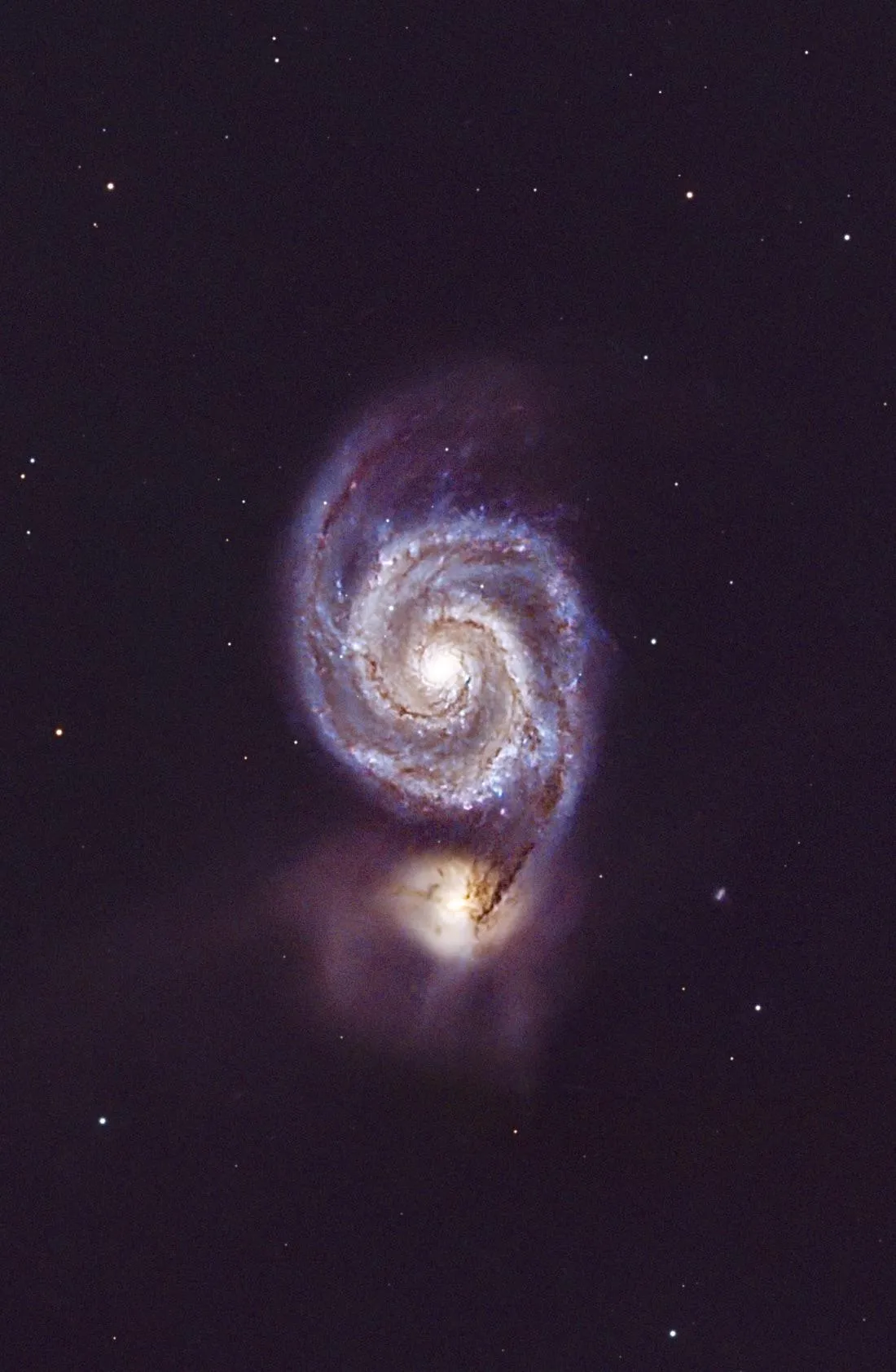Capturing the Cosmic Dance: The Whirlpool Galaxy from My Backyard
The universe is vast and full of wonders, and among them, the Whirlpool Galaxy, also known as Messier 51 (M51), stands out as a magnificent cosmic spiral. Located approximately 23 million light-years away in the constellation Canes Venatici, M51 is famous for its distinct interacting galactic pair, with NGC 5195 seemingly tugging at its larger companion. What makes this recent image particularly remarkable is that this breathtaking view was captured not from a professional observatory, but from a dedicated amateur's very own backyard.
From Backyard to Cosmos: An Amateur's Triumph
For many, astrophotography might seem like an exclusive domain reserved for professional astronomers with million-dollar telescopes. However, the dedicated efforts of amateur enthusiasts continue to prove that stunning deep-sky objects are within reach, even from light-polluted environments. This incredible image of the Whirlpool Galaxy is a testament to what passion, patience, and sophisticated amateur equipment can achieve.
The Technical Journey Behind the Beauty
Achieving such a detailed and vibrant image of a distant galaxy requires meticulous planning and execution. The astrophotographer utilized a high-performance setup, featuring a monochrome cooled camera, which was maintained at a frigid -10 degrees Celsius to minimize thermal noise – a common adversary in long-exposure astrophotography. This camera was paired with a 6-inch refractor telescope, known for its sharp optics and wide field of view, ideal for capturing extended objects like galaxies and nebulae.
To bring out the galaxy's true colors and intricate details, the image was created by combining multiple exposures taken through red, green, and blue (RGB) filters. This technique significantly enhances the signal-to-noise ratio, allowing faint structures to emerge from the background sky. The total integration time for this stunning composite was an impressive 2 hours and 15 minutes, collecting every photon possible from the distant spiral arms.
Behold the Whirlpool Galaxy:

The Evolving Landscape of Astrophotography
The astrophotography community is a vibrant space, constantly pushing boundaries and making the hobby more accessible. While advanced setups like the one used for this Whirlpool Galaxy image yield professional-grade results, new technologies, such as smart telescopes, are empowering absolute beginners to venture into the cosmos without a steep learning curve or prohibitive expense. These tools are democratizing deep-sky imaging, showing that there's a path for everyone, whether you're aiming for a quick capture of a nebula or a detailed study of a distant galaxy. The shared passion for unraveling the universe's beauty continues to inspire and unite stargazers worldwide.



